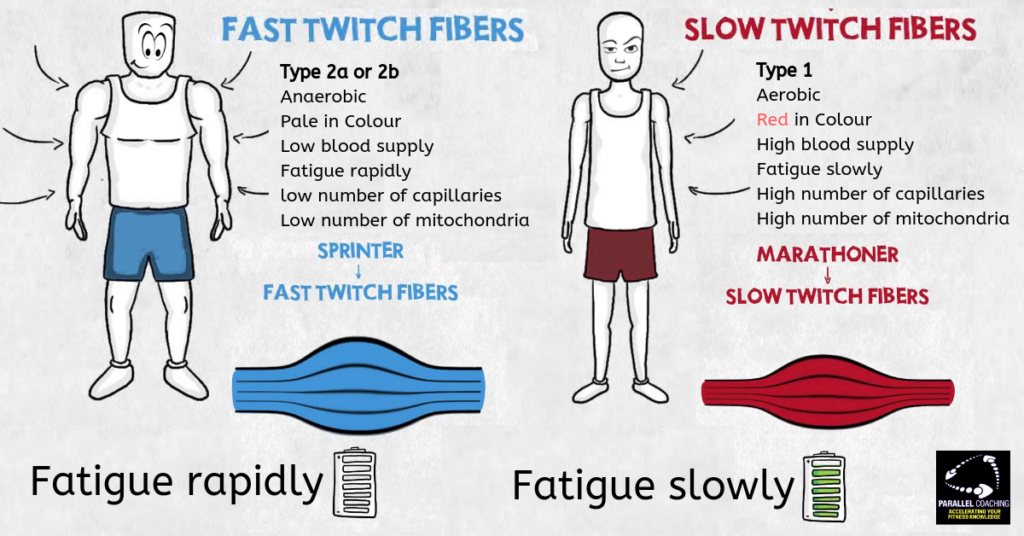Q: I’ve been hearing about working different types of muscle fiber to produce a complete physique, but I’m not sure how you work the different types. Is there any validity to this muscle fiber stuff?
A: While it’s true that there are different types of muscle fiber, it’s a matter of debate as to whether bodybuilders need concern themselves too much with working each of the different fiber types to reach their physical potential. There are, in fact, two types of human muscle fiber. Type 1 (or slow twitch) fibers have a slow contraction time and are highly resistant to fatigue. These fibers are predominant in cardiovascular exercise. Most of our everyday activities also involve slow twitch fibers. Type 2 (or fast twitch) fibers are just the opposite – they have a fast contraction time and a low resistance to fatigue. These fibers are further divided into Type 2-A and Type 2-B fibers. Type 2-A fibers have a moderate resistance to fatigue, representing a mid point between the Type 1 and Type 2 extremes. They come into play when an athlete performs prolonged anaerobic activity with a high force output, such as a track race. Type 2-B fibers are extremely fatigue sensitive and are used for short bursts of strength and energy as are needed for the shot put or the high jump.
O.k. so how does all of this affect the bodybuilder? Well, if you’ve got more of a certain fiber type in a particular muscle group, so the story goes, you would need to train that muscle group in accordance with that fiber type. Lets assume, for instance that your deltoids are 70% slow twitch and only 30% fast twitch. If you were training to fiber type, you’d have a higher rep range, shorter rest periods and higher volume of exercise. So 6-8 reps on the military press would become 10-12 reps. however, you’d still be training heavy and the last rep would be to failure. It should be noted, however, that some experts feel that to affect slow twitch fibers the rep range needs to be much higher – like in the hundreds. So, there is no consensus on the true value of this approach. The key is to experiment with your body and see what works for you. Be fair, though, and give the system enough time to work – say, six weeks.
By the way, if you’re wondering how to figure out if a muscle group is predominantly Type 1 or Type 2 fiber here’s and easy way to find out. Perform your one rep max on an isolation exercise for the body-part. Now, cut the weight in half and see how many reps you can perform strictly. If you can get 10 reps, then you’ve got approximately a 50/50 mix of Type-1 and Type-2 fibers. If you get 8 or fewer reps then your Type-2 fibers are predominant. And, if you get more than 10, then that muscle is Type-1 dominant.

